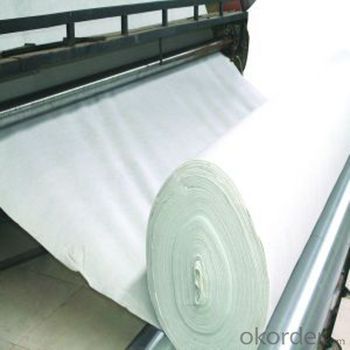- Understanding the Role of Geomembrane Liners in Waste Management
- Innovations in Geomembrane Liners for Water Management
- Geomembrane Liners: A Comprehensive Guide
- The Future of Geomembrane Liners in Civil Engineering
- Geomembrane Liners: Enhancing Landfill Stability
Manager:
WhatsApp:+86 177 0135 2670
Tel:+86 177 0135 2670
Email:marketing@okorder.com
Address:3rd Floor, No.2 Building, No.1 Sanlihe Road
Applications of HDPE Geomembranes in Environmental Protection
In the realm of environmental protection, High-Density Polyethylene (HDPE) geomembranes have emerged as a versatile and indispensable solution. These synthetic materials, known for their durability and resistance to various environmental conditions, have found applications in a multitude of sectors. Let's dive into the world of hdpe Geomembranes and explore their significance in safeguarding our environment.

A Protective Layer for Our Land
Imagine a shield that protects our land from harmful substances. That's precisely what HDPE geomembranes are. They act as a barrier, preventing contaminants from seeping into the soil and groundwater. This is particularly crucial in waste management facilities, where the risk of pollution is ever-present. By lining landfills and containment ponds with HDPE, we can ensure that hazardous materials remain contained and our natural resources remain pristine.
The Role of HDPE in Water Management
Water, the essence of life, needs to be protected and conserved. HDPE geomembranes play a pivotal role in water management systems. They are used in the construction of reservoirs, canals, and dams to prevent water loss due to seepage. This not only helps in water conservation but also in maintaining the structural integrity of these water bodies. Moreover, HDPE's resistance to chemicals ensures that water quality remains uncompromised.
Revolutionizing the Agricultural Sector
The agricultural sector has also benefited from the use of HDPE geomembranes. They are employed in creating pond liners for fish farming and irrigation systems, which helps in maintaining a consistent water level and reducing water evaporation. This, in turn, contributes to increased agricultural productivity and sustainable farming practices.
A Sustainable Solution for Mining Operations
Mining can be a double-edged sword; it provides us with valuable resources but often at the cost of environmental degradation. HDPE geomembranes offer a sustainable solution by lining tailing ponds and waste disposal areas. This minimizes the impact of mining activities on the surrounding environment and helps in the recovery of land post-mining operations.
The Unseen Heroes of Wastewater Treatment
Wastewater treatment plants are the unsung heroes of our environment. They work tirelessly to clean and purify water, ensuring it is safe to be returned to the environment. HDPE geomembranes are an integral part of these plants, used to line treatment beds and tanks. They prevent the escape of contaminants and facilitate the treatment process by providing a stable and durable surface.
The Future of Environmental Protection with HDPE
As we look towards a sustainable future, HDPE geomembranes are set to play an even more significant role. With advancements in technology and material science, we can expect to see improved versions of HDPE that are more efficient, longer-lasting, and environmentally friendly. The potential for innovation in this field is vast, and the possibilities are exciting.
In conclusion, HDPE geomembranes are more than just a material; they are a symbol of our commitment to environmental protection. Their applications are vast, and their impact is profound. As we continue to innovate and find new ways to use these versatile materials, we can look forward to a cleaner, safer, and more sustainable world.
- Previous:HDPE Geomembranes: The Future of Waterproofing
- Next:The Evolution of HDPE Geomembranes in Modern Engineering
-
2024-12-05Geomembrane Liners: A Comprehensive Guide






